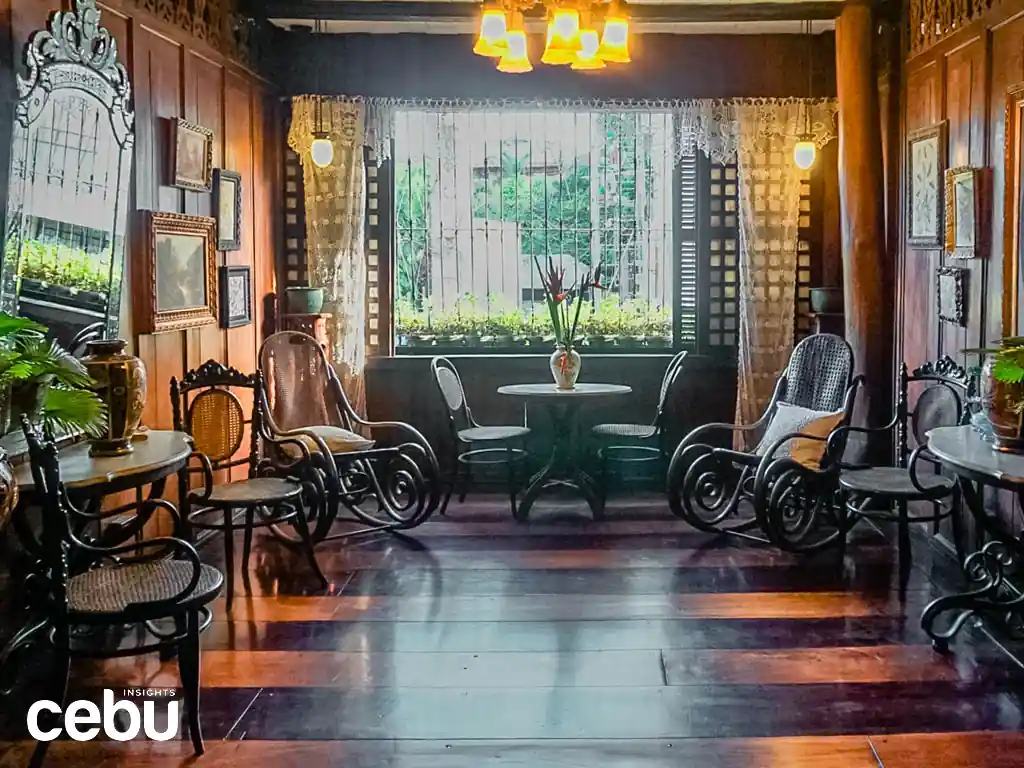Casa Gorordo shows its visitors what a typical house in the 19th century looked like.
There are a number of museums in Cebu worth seeing. Old antiques and centuries-long infrastructure give insights on how the city was before today.
Casa Gorordo is a perfect spot to learn about the life of Cebuanos during and after the Spanish colonization. This two-storey house keeps many artifacts that have been passed down for several decades by one of Cebu’s most prominent families.
This used to be the ancestral house of four generations of the Gorordos, which included the first Cebuano Bishop, Juan Isidro de Gorordo. It was purchased and renovated by the Ramon Aboitiz Foundation and was turned into a public museum in the 1980s.
WHAT TO SEE AT THE CASA GORORDO
The museum used to be the ancestral house of the Gorordos, a notable family in Cebu.
The residence clearly depicts what Cebuano houses looked like after the Spanish colonization. Made from coral stone blocks and terracotta roof tiles, its aesthetics bring a sense of nostalgia to its visitors.
The first floor is a more traditional museum with a set of galleries and artifacts. Included are tools for agriculture and household use, reenacted images of notable Cebuano landmarks, and a long list of names of prestigious Cebuano families.
They also have an amphitheater where tourists can get a small glimpse of what’s inside.
The museum’s artifacts showcase the Filipinos’ lifestyle during the Spanish colonization in the Philippines.
Upstairs, there are more artifacts and antiques, and they have been placed in several function rooms. There is a living room with wooden rocking chairs, mirrors, and old portraits.
In the middle of the second floor is a long dinner table with candles and utensils. They also have a kitchen, bedroom, and prayer room, accurately depicting the Gorordo family’s lifestyle during the Spanish colonization in the Philippines.
There are many function rooms within this ancestral house housing precious artifacts.
The balcony is situated on the second floor. It gives you a bird’s eye view of the museum’s patio below, and it is sometimes used as an area for events and gatherings.
Your tour at the museum concludes at the gift shop. Here, you can buy many souvenirs like keychains, shirts, local woven products, and even wooden utensils to bring home.
There is also a cafe below that serves coffee and snacks, making the museum a great place to relax, unwind, or be productive.
HOW TO GET THERE
Casa Gorordo is located in Pari-an, which is famous for the Heritage of Cebu Monument and its historical context as a business hub. It also houses other heritage sites in Cebu, like the Yap-Sandiego Ancestral House and the Jesuit House.
You need to walk to the street behind Yap-Sandiego until you find the museum on the left side. If you want to commute, you can ride any jeepney passing by Colon Street and get off near the Colon marker, then walk to Pari-an.
As one of the premier historical places in Cebu, knowledge is prevalent in Casa Gorordo. You get to know so much about how Cebuanos in the past like the Gorordo family used to live their lives, while also seeing how certain objects and places have changed.
The museum also depicts the changes in the Filipino household, from the colonial times to the modern age, and neatly packages them in an aesthetically pleasing and informative area.






